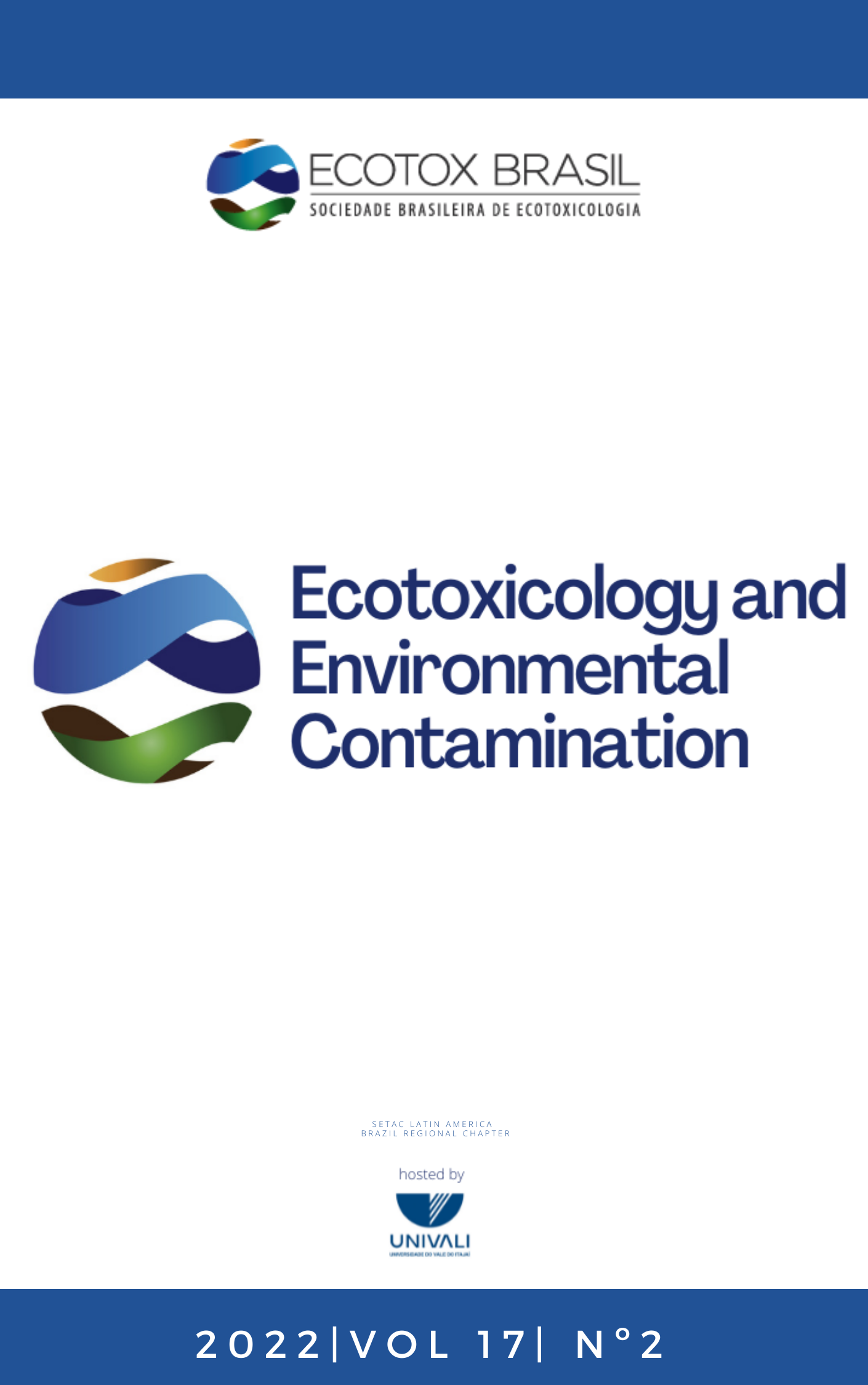Tissue damage, mutagenic effect and alteration in antioxidant defense in Danio rerio (Cypriniformes: Cyprinidae) after chronic exposure to Metformin hydrochloride.
DOI:
https://doi.org/10.5132/eec.2022.02.12Keywords:
Environmental contamination, Mutagenicity, Micronucleus, Oxidative stress, Xenobiotics, ZebrafishAbstract
Metformin hydrochloride (MET) is an oral medication prescribed for patients with diabetes, with a large part of its metabolites being eliminated in the urine. Basic sanitation systems are not fully effective in removing all the contaminants, promoting contamination to rivers and supply reservoirs. The objective of this study was to test the potential effects of MET on the antioxidant system, mutagenic and tissue damages in D. rerio. The animals were acclimatized and separated into six groups and exposed to different concentrations of MET (0.00, 0.25, 0.50, 0.75, 1.25 g.L-1) over a 96 hour period to determine the LC50. In another experiment, five groups of ten animals were separated: four groups for evaluation of the chronic effect of 0.45 g.L-1 of metformin hydrochloride (15, 30, 45 and 60 days) and, a negative control group (NC). The antioxidant system and the tissue damages of the muscle samples, the mutagenicity in the blood samples. The presence of oxidative stress and mutagenicity, together with the activation of the antioxidant system, showed up to 30 days of treatment, with intense tissue damages in 60 days and the emergence of apoptotic cells, which is evidence of the toxic potential of this drug to non-target aquatic populations.
Downloads
Downloads
Published
How to Cite
Issue
Section
License
Copyright (c) 2022 Ecotoxicology and Environmental Contamination

This work is licensed under a Creative Commons Attribution 4.0 International License.
Copyright © 2006 ECOTOX-Brasil
Copyright notice: It is a condition for publication that manuscripts submitted to this journal have not yet been published and will not be simultaneously submitted or published elsewhere. By submitting a manuscript, the authors agree that copyright for their article is transferred to the Sociedade Brasileira de Ecotoxicologia (ECOTOX-Brasil) if and when the article is accepted for publication. The copyright covers the exclusive rights to reproduce and distribute articles, including reprints, photographic reproductions or any other reproduction of a similar nature, including translations. No part of this publication may be reproduced, stored in a retrieval system or transmitted in any form or by any means, electronic, mechanical, photocopying, recording or otherwise, without permission of the publisher.
Notice: While every effort is made by the EEC, editors and editorial board to see that no inaccurate or misleading data, opinions or statements appear in this journal, they wish to make it clear that the contents of the articles and advertisements published herein are the sole responsibility of the contributors or advertisers concerned. Accordingly, the EEC, the editorial board and editors and their respective employees, officers and agents accept no responsibility or liability whatsoever for the consequences of any inaccurate or misleading data, opinion or statement.




